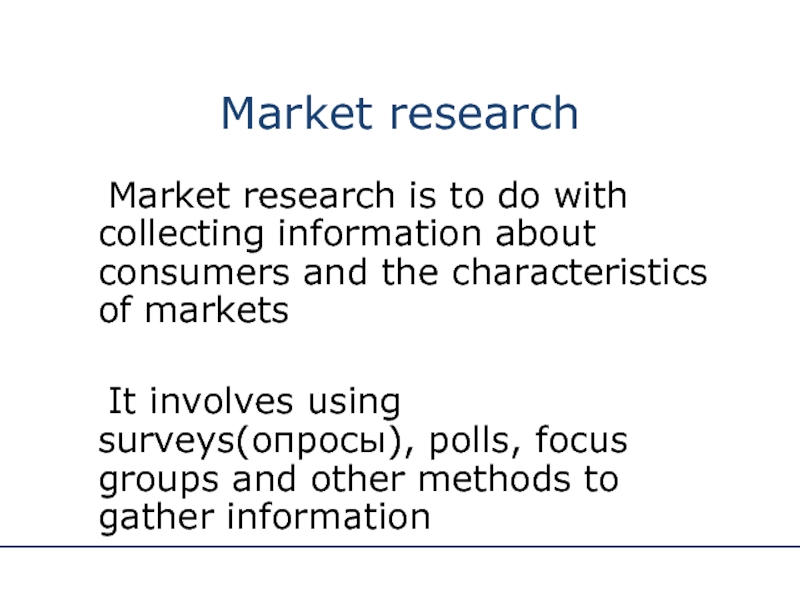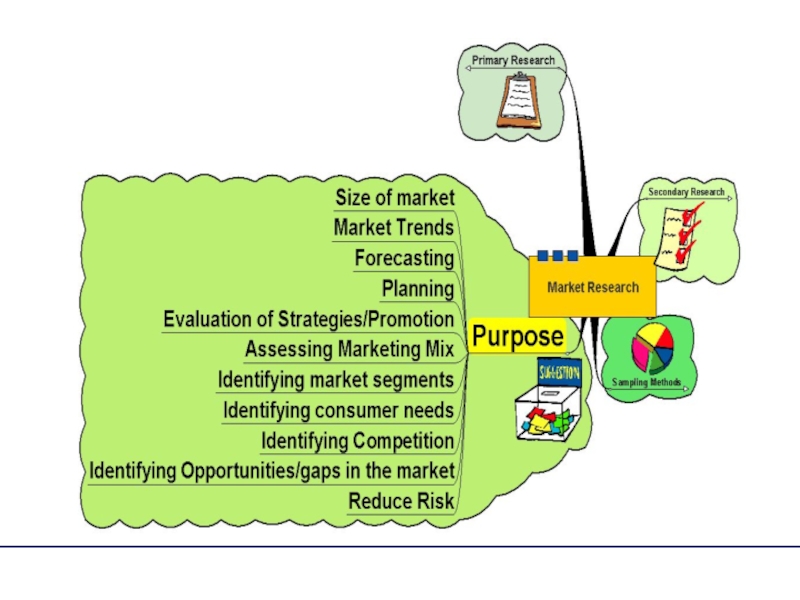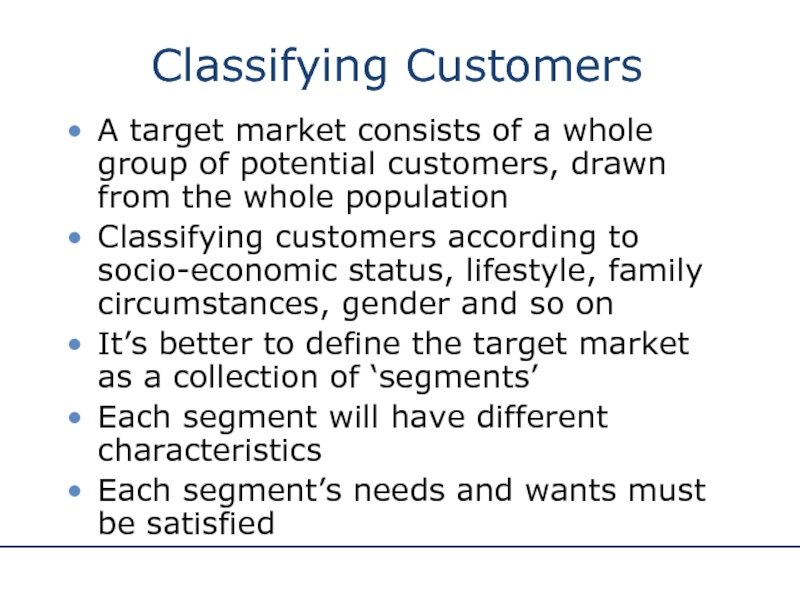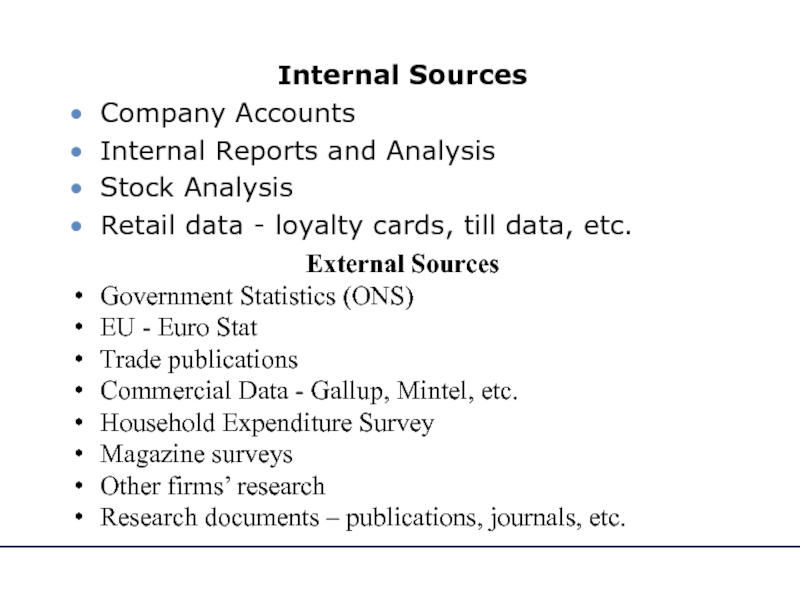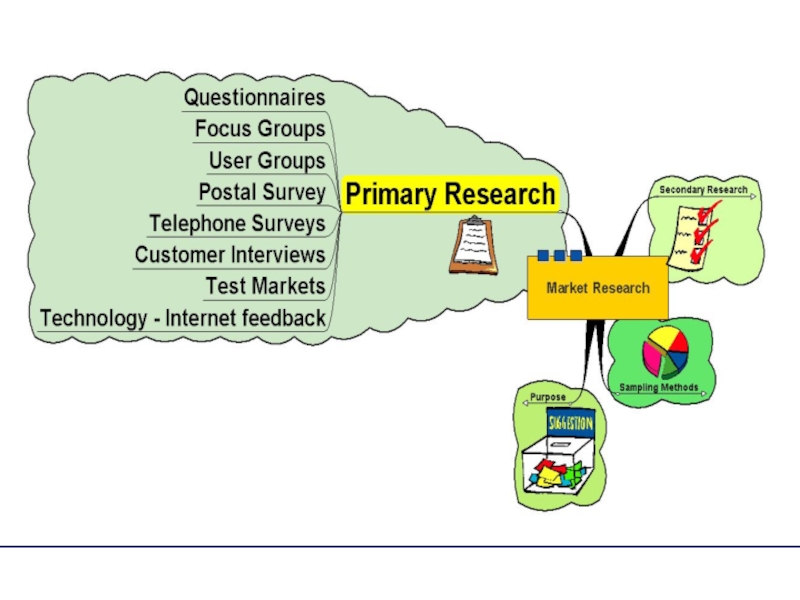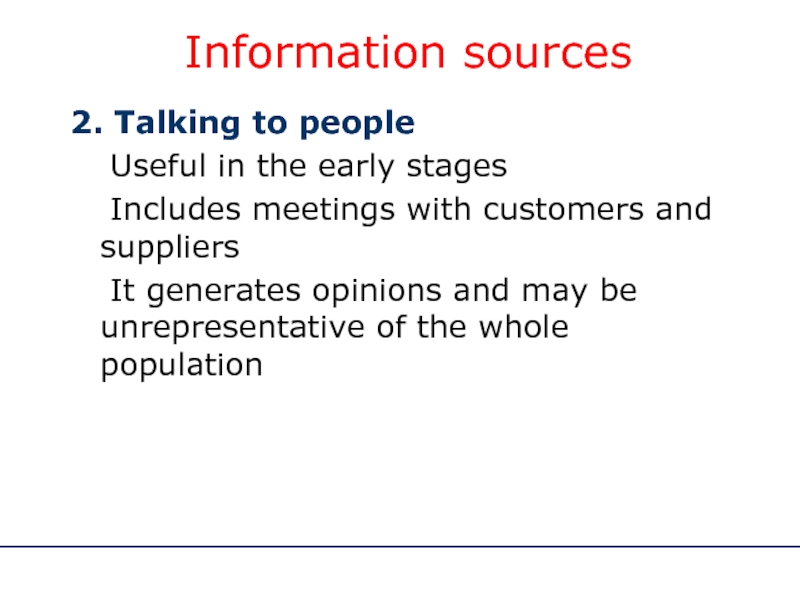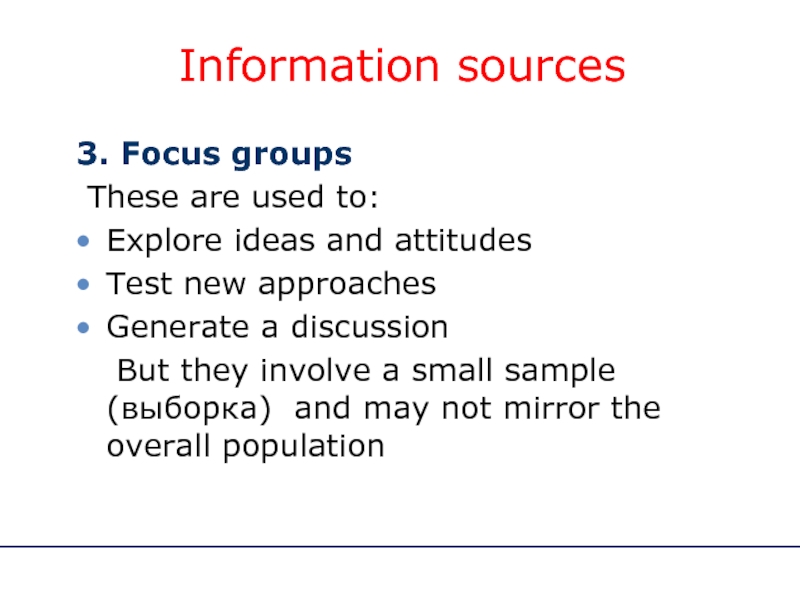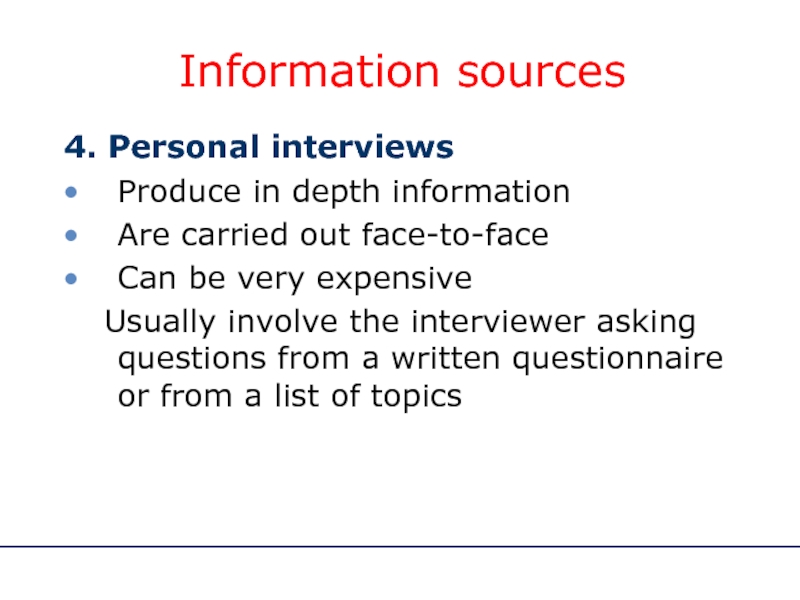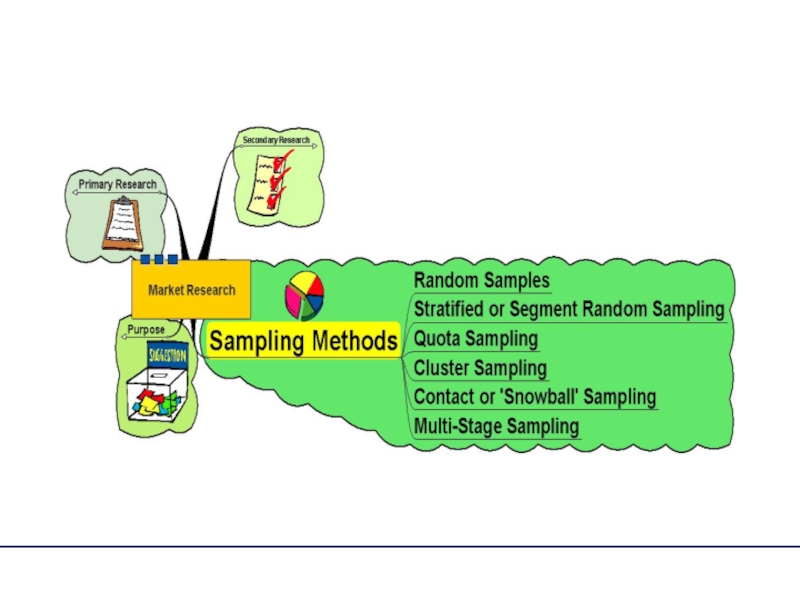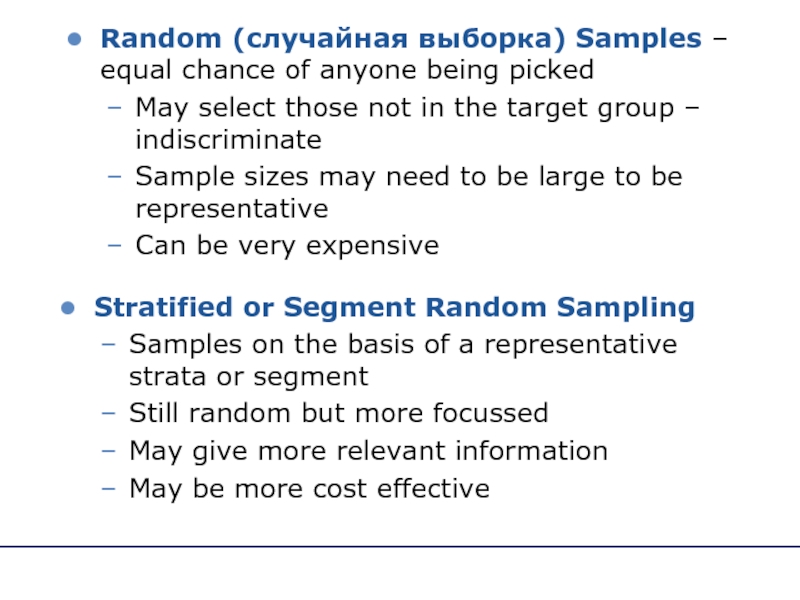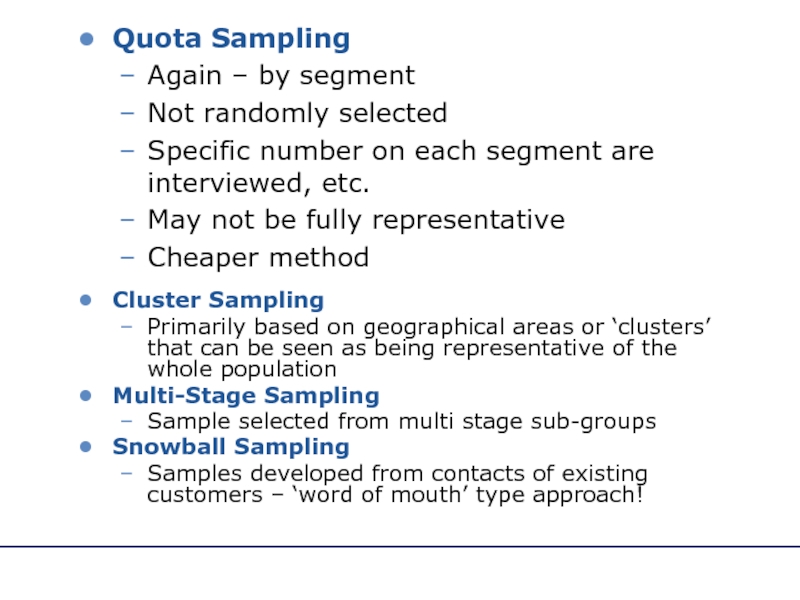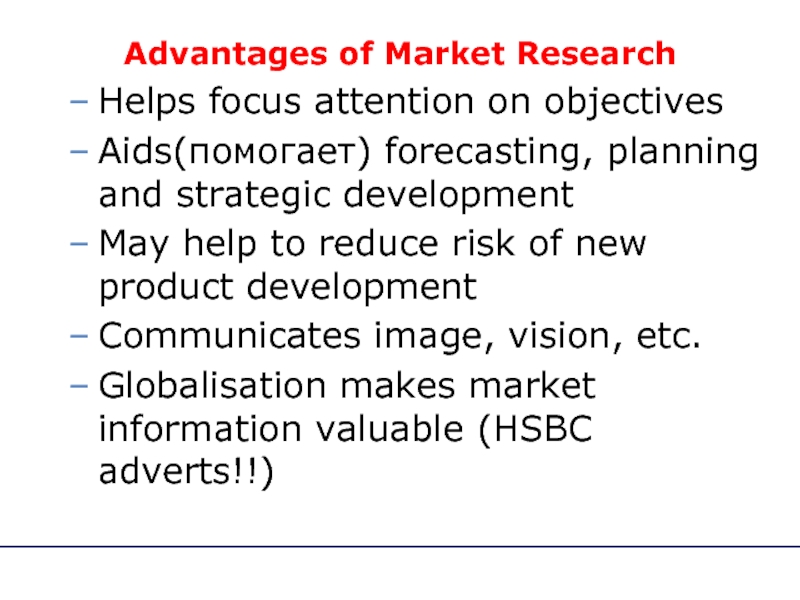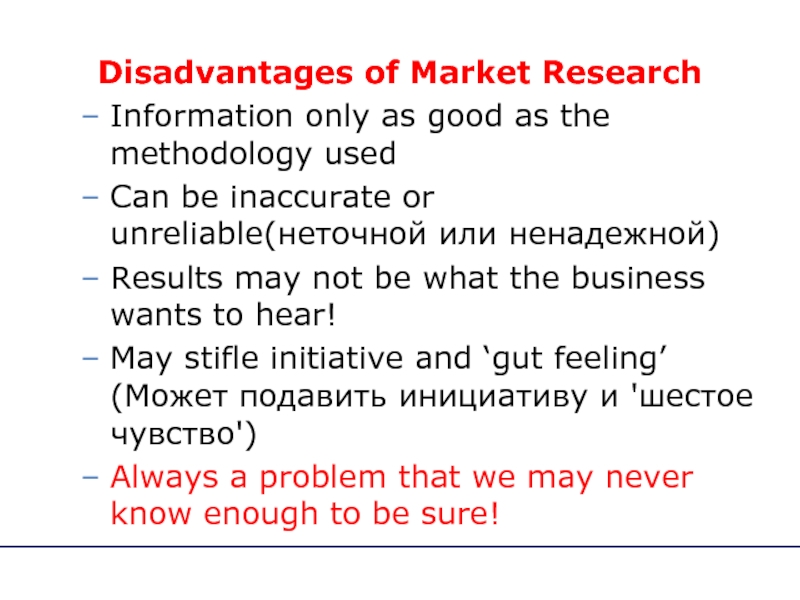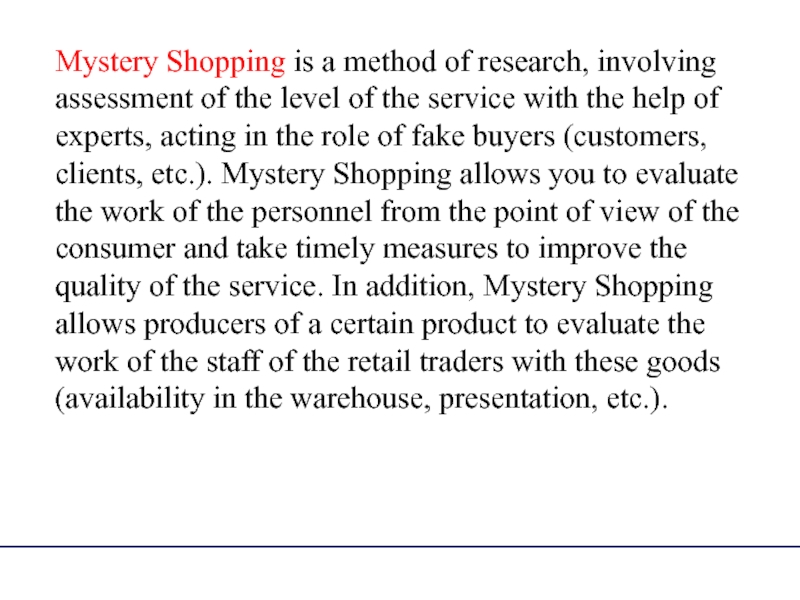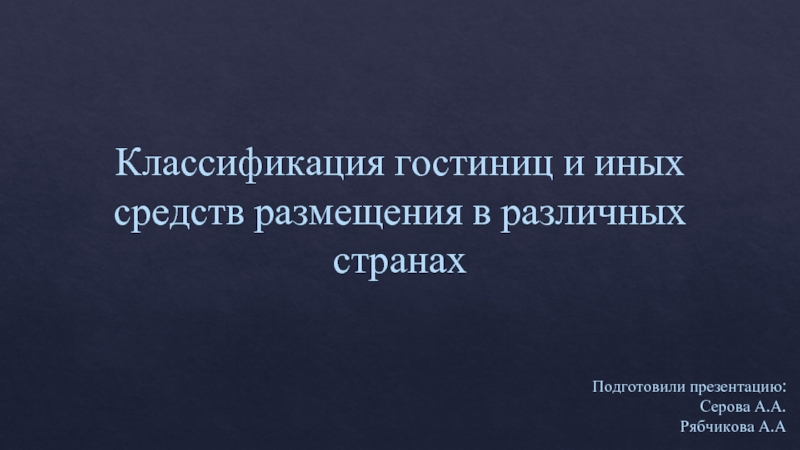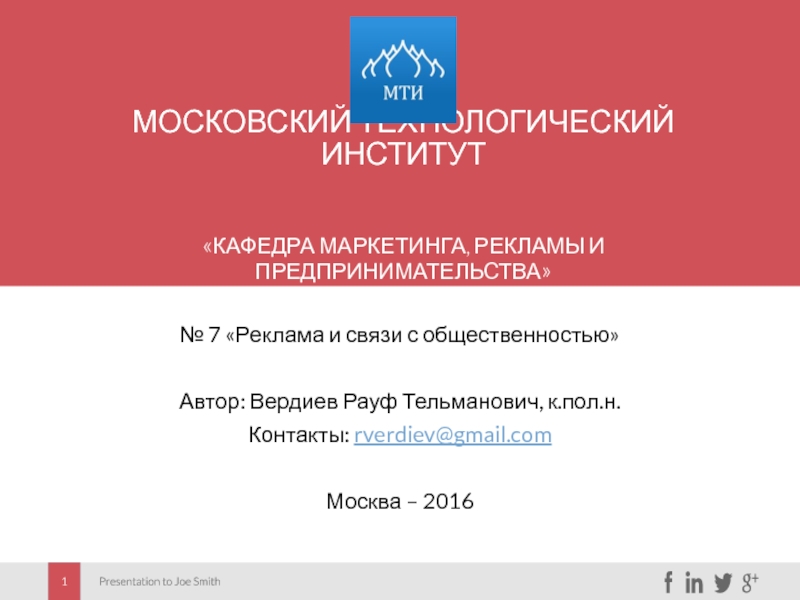- Главная
- Разное
- Дизайн
- Бизнес и предпринимательство
- Аналитика
- Образование
- Развлечения
- Красота и здоровье
- Финансы
- Государство
- Путешествия
- Спорт
- Недвижимость
- Армия
- Графика
- Культурология
- Еда и кулинария
- Лингвистика
- Английский язык
- Астрономия
- Алгебра
- Биология
- География
- Детские презентации
- Информатика
- История
- Литература
- Маркетинг
- Математика
- Медицина
- Менеджмент
- Музыка
- МХК
- Немецкий язык
- ОБЖ
- Обществознание
- Окружающий мир
- Педагогика
- Русский язык
- Технология
- Физика
- Философия
- Химия
- Шаблоны, картинки для презентаций
- Экология
- Экономика
- Юриспруденция
Marketing research презентация
Содержание
- 1. Marketing research
- 4. In the end, market research is about
- 5. Classifying Customers A target market consists of
- 6. Types of specialization 1) concentration of efforts
- 7. Why Use Different Methods? Each different method
- 8. Secondary Research
- 9. Internal Sources Company Accounts Internal Reports
- 10. Information sources 1. Literature search Getting
- 12. Primary Research Characteristics - First hand information
- 13. Quantitative and Qualitative Information: Quantitative – based
- 14. Information sources 2. Talking to people
- 15. Information sources 3. Focus groups These
- 16. Information sources 4. Personal interviews Produce
- 17. Information sources 5. Telephone surveys The
- 18. Information sources 6. Postal surveys Ideal for
- 20. Random (случайная выборка) Samples – equal chance
- 21. Quota Sampling Again – by segment Not
- 22. Advantages of Market Research Helps focus attention
- 23. Disadvantages of Market Research Information only as
- 25. Mix-methodologies - mixed methods research, rather successfully
- 26. Mystery Shopping is a method of research,
Слайд 1Market research
Market research is to do with collecting information about consumers
It involves using surveys(опросы), polls, focus groups and other methods to gather information
Слайд 4In the end, market research is about improving the marketing efforts
Research Purposes
To identify customer needs and then meet those needs
To learn about customer attitudes and values
To help develop products and services that meet identified needs
Слайд 5Classifying Customers
A target market consists of a whole group of potential
Classifying customers according to socio-economic status, lifestyle, family circumstances, gender and so on
It’s better to define the target market as a collection of ‘segments’
Each segment will have different characteristics
Each segment’s needs and wants must be satisfied
Слайд 6Types of specialization
1) concentration of efforts on the same segment 2)
4) Market specialization 5) complete coverage of the market
Слайд 7Why Use Different Methods?
Each different method has its advantages and disadvantages
Each
Users need to work out if the method is right for them according to its cost, reliability, validity, accessibility and the time it will take to gather
Слайд 9
Internal Sources
Company Accounts
Internal Reports and Analysis
Stock Analysis
Retail data - loyalty cards,
External Sources
Government Statistics (ONS)
EU - Euro Stat
Trade publications
Commercial Data - Gallup, Mintel, etc.
Household Expenditure Survey
Magazine surveys
Other firms’ research
Research documents – publications, journals, etc.
Слайд 10Information sources
1. Literature search
Getting hold of all available material on
Internal company information
Relevant (соответствующая) tourism (trade) literature
Newspapers
Magazines
Firms’ annual reports
Слайд 12Primary Research Characteristics
- First hand information
- Expensive to collect, analyse and
- Can be highly focussed and relevant
- Care needs to be taken with the approach and methodology to ensure accuracy (Необходимо проявлять осторожность при выборе подхода и методологии, чтобы обеспечить точность)
- Types of question – closed – limited information gained; open – useful information but difficult to analyse
Слайд 13Quantitative and Qualitative Information:
Quantitative – based on numbers – 56% of
Qualitative – more detail – tells you why, when and how!
Слайд 14Information sources
2. Talking to people
Useful in the early stages
Includes
It generates opinions and may be unrepresentative of the whole population
Слайд 15Information sources
3. Focus groups
These are used to:
Explore ideas and attitudes
Test
Generate a discussion
But they involve a small sample (выборка) and may not mirror the overall population
Слайд 16Information sources
4. Personal interviews
Produce in depth information
Are carried out face-to-face
Can
Usually involve the interviewer asking questions from a written questionnaire or from a list of topics
Слайд 17Information sources
5. Telephone surveys
The fastest way of gathering information, especially
A prepared script (сценарий) is used as with written questionnaires, but a phone survey allows opinions to be tested further
Слайд 18Information sources
6. Postal surveys
Ideal for large sample sizes
If sample covers wide
Generally cost less than telephone interviews
But take longer to complete
No interviewer, so less chance of personal bias (личная предвзятость)
Unable to probe for more detailed information
Слайд 20Random (случайная выборка) Samples – equal chance of anyone being picked
May
Sample sizes may need to be large to be representative
Can be very expensive
Stratified or Segment Random Sampling
Samples on the basis of a representative strata or segment
Still random but more focussed
May give more relevant information
May be more cost effective
Слайд 21Quota Sampling
Again – by segment
Not randomly selected
Specific number on each segment
May not be fully representative
Cheaper method
Cluster Sampling
Primarily based on geographical areas or ‘clusters’ that can be seen as being representative of the whole population
Multi-Stage Sampling
Sample selected from multi stage sub-groups
Snowball Sampling
Samples developed from contacts of existing customers – ‘word of mouth’ type approach!
Слайд 22Advantages of Market Research
Helps focus attention on objectives
Aids(помогает) forecasting, planning and
May help to reduce risk of new product development
Communicates image, vision, etc.
Globalisation makes market information valuable (HSBC adverts!!)
Слайд 23Disadvantages of Market Research
Information only as good as the methodology used
Can
Results may not be what the business wants to hear!
May stifle initiative and ‘gut feeling’ (Может подавить инициативу и 'шестое чувство')
Always a problem that we may never know enough to be sure!
Слайд 25Mix-methodologies - mixed methods research, rather successfully combining the advantages of
The main types of mix-methodologies: hall tests, home tests and mystery shopping.
Hall-test - method of investigation, when a large group of people (up to 100-400 people) in a special room is testing a product and/or its elements (packaging, advertisement, etc.), and then answers questions (fill in the form), relating to the goods.
Home-test - similar to the hall-test, with the only difference that the testing of the goods occurs in the home (the home of the Respondent). Use this method when a need long-term testing of the goods. As a rule, product packaging does not contain the names of trademarks and indications of the firm-manufacturer.
